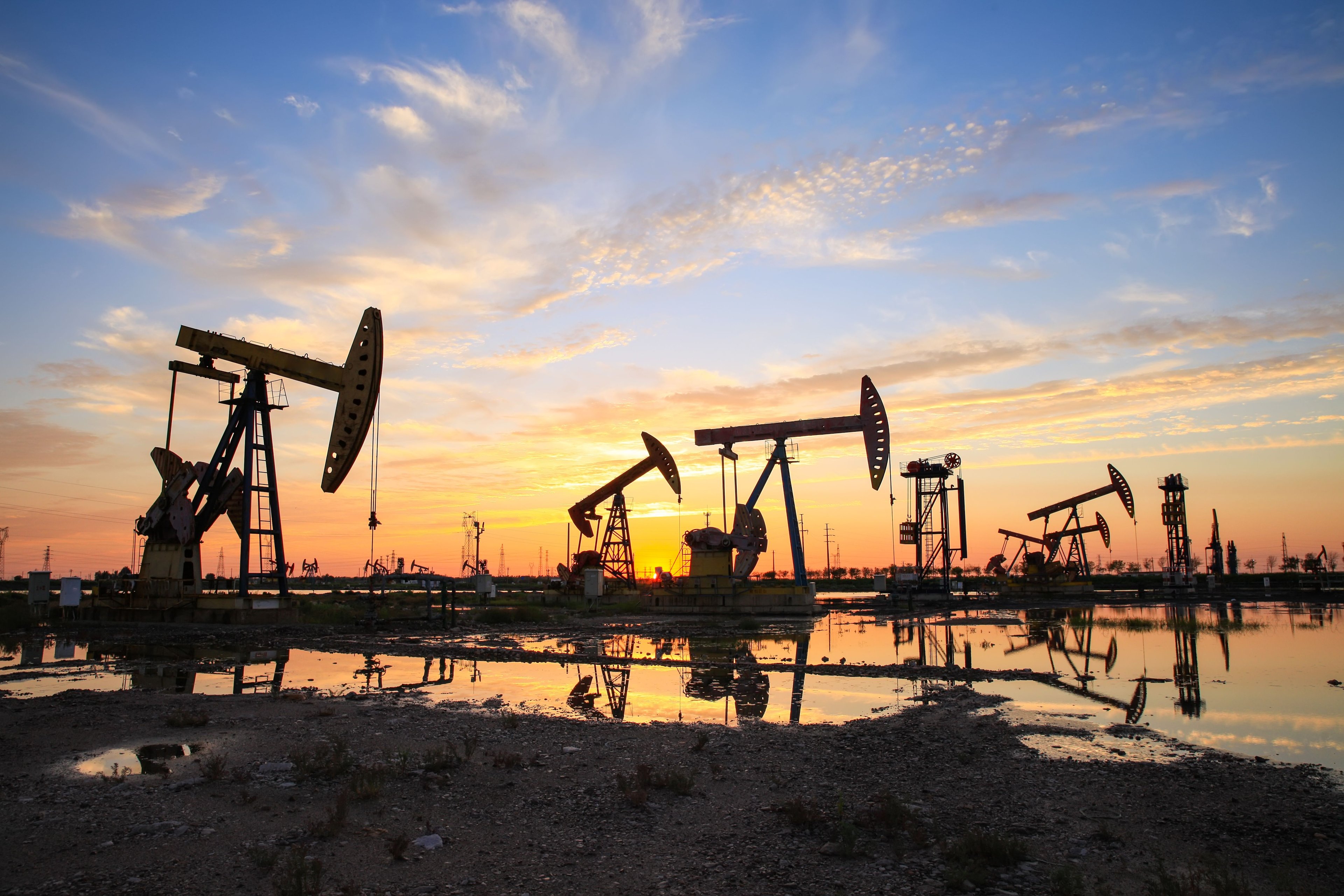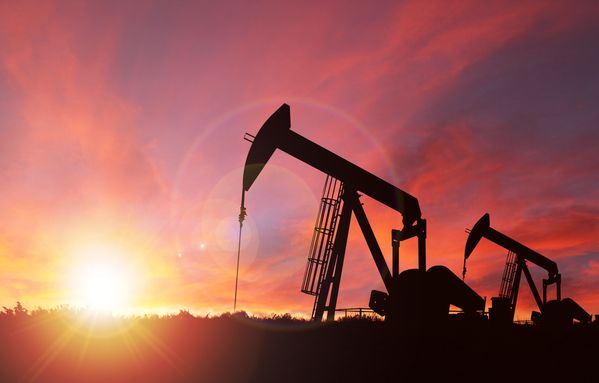2017 was a year in which Helmerich & Payne (HP 4.67%) sowed a lot of seeds to improve its business. The company spent a lot of money reactivating and upgrading its rigs to satisfy producers' incredible appetite for high-specification rigs (called super-spec rigs in industry parlance). That came at a cost, though, as the company sacrificed a lot on margins and cash flow to grow.
This year, though, Helmerich & Payne thinks it can reap what it sowed last year. As the market for rigs gets tighter and management can be more selective about its growth, the company thinks it can deliver higher margins and bring its bottom line back into the black. Here are a few quotes from Helmerich & Payne's most recent conference call that highlight what management has in mind for the rest of the year.

Image source: Getty Images.
The pillars for 2018 success
Helmerich's strategy in recent years has been to offer a unique product to the drilling community that no other rig company could. Its standardized rig designs and construction made upgrades incredibly easy, which allowed management to move faster than its peers to reactivate and upgrade rigs right when producers needed them over a year ago.
According to CEO John Lindsay, the company will maintain this approach. With producers now more flush with cash, Lindsay also thinks it will lead to better pricing power and returns.
The downturn has been a challenging three-year journey, and H&P has been preparing for the opportunity this improved outlook presents for 2018 and beyond. There are three main areas I'd like to highlight this morning. First is the industry-leading success we've had in upgrading our FlexRig fleet to super-spec in order to provide the right rig for our customers. Second, the pricing power we are seeing as a result of the performance the FlexRig super-spec fleet is delivering, which is the reason customers are willing to pay for the value proposition. The third highlight I will cover is the digital evolution that continues to be an important part of our industry's future and the fact that we are a leader in utilizing data to deliver performance.
Markets are tight if you are looking in the right place
According to the Baker Hughes, A GE Company rig count, there are 984 active rigs in the U.S. right now. Back in 2014, though, that number was north of 1,800. One would assume this means that there is a lot of excess idle equipment out there that would impact pricing power. That isn't necessarily the case, though. According to Lindsay, the kind of rigs producers want are in high demand. What's more, the company is likely in the best position to meet future demand.
[L]et's begin with the industry's super-spec fleet being essentially fully utilized in U.S. land with approximately 400 rigs active today. We define super-spec rigs as AC drive, 1,500-horsepower, 750,000-pound hook load, pad capability and 7,500-psi mud systems. H&P currently has 171 super-spec rigs operating at approximately 98% utilization. We believe there are another 200 to 250 rigs in the industry where upgrades to super-spec capacity would be economically feasible, and H&P owns roughly half of those.
Of our upgradable fleet, approximately 30 FlexRigs are currently active today and can be upgraded to super-spec status in the field with a $2 million to $3 million investment. The FlexRig design allows H&P to reinvest in our fleet to enhance rig capabilities that will benefit our customers in the areas that require well designs which are more challenging and complex. In fact, since the first fiscal quarter of 2017, we have upgraded 107 FlexRigs to super-spec capacity. If customer demand remains and we're able to achieve reasonable pricing, our upgrade cadence could average 12 or more FlexRig upgrades per quarter.
When acquisitions make sense
Even though the market is improving, most rig companies are selling at incredibly low valuations. A company with a strong balance sheet like Helmerich & Payne could easily expand its fleet on the cheap if it wanted to.
HP Price to Tangible Book Value data by YCharts.
According to Lindsay, Helmerich & Payne has no intention of buying rigs from other companies. Instead, he highlighted its acquisition strategy.
We think having a uniform fleet of FlexRigs, 3s, 4s and 5s, is a significant competitive advantage. So we didn't expect to see us looking at that type of acquisition. And so the technology acquisitions makes sense. Again, we've talked about that for a long period of time. And I think the way to summarize is the technology that would enhance the performance for our customers, improve wellbore placement, quality, production and all of those things. I think customers would be willing to pay us to get a return on the investments that we're making.
As mentioned above, there are a lot of inherent advantages to having a standardized rig design. It makes parts interchangeable, simplifies the supply chain, and makes per-unit costs for construction and upgrades lower than customized fleets. It's one of the many reasons that Helmerich & Payne is considered the best in the industry.
Better discipline in the industry?
When asked about the current oil market and what Helmerich & Payne expects in the year in terms of drilling activity and oil prices, Lindsay gave an interesting response.
I wish I had a crystal ball to look into to know for sure. I know you've heard us say that our belief for the last couple of [quarters] is that the rig count that we've been experiencing was kind of an expectation of $45 to $50 oil. And now, again, I think oil prices have probably exceeded everyone's expectation this early in 2018. And so if we're looking at a $60 or $65 oil price going forward, I think we're -- we can logically expect to see customers pick some rigs up. What's interesting is there are so many variables in that and in that decision. I think first of all, one thing to keep in mind is that there is a lot of evidence for higher levels of discipline for E&Ps in terms of spending within cash flow.
The last sentence is what really stands out from an investment perspective. For years, an oil and gas producer's solution to everything was produce more oil. That got a lot of companies in trouble because they were outspending their cash flows and relying heavily on the debt and equity market to fill the funding gaps. That strategy can only go so long, though, as eventually investors will want to see some form of capital return. If Lindsay is indeed correct, and there are signs that some producers are doing this as we speak, then it could make for a much healthier and resilient U.S. oil market.
Any fear of losing those dividend payments?
Helmerich & Payne has been a dividend stock for more than four decades, but this recent downturn has tested the company's payout in ways we haven't seen before. While the company has hinted that the dividend could be revisited if things turned again for the worse, CFO Juan Pablo Tardio seems to think that the steps it took in 2017 will start to pay off in 2018.
I think your point is that when you look at cash from operating activities, the number may have been a little lower than what you may have expected. We do expect that number to continue to increase significantly. Part of what impacted the number related to some cash absorption in terms of working capital, obviously, as business improves, revenues increase. There's higher accounts receivable, et cetera that absorb working capital. Some movements in that regard and other considerations related to the quarter translated into a higher level of absorption of working capital than we or you may have expected. But going forward, I don't think that that necessarily continues, at least to the extent that we saw during the first fiscal quarter. I would expect cash from operations levels to be significantly higher for the second fiscal quarter, given our guidance.
If it truly is just a timing thing, then we should see a significant boost to cash flow in the coming quarters. That gives investors a good benchmark to measure Helmerich & Payne's success in 2018. If the company can deliver higher operational cash from its high-end fleet without costs eating into profits, then the concerns about its 4.25% dividend yield may be overblown and shares could be quite cheap.






